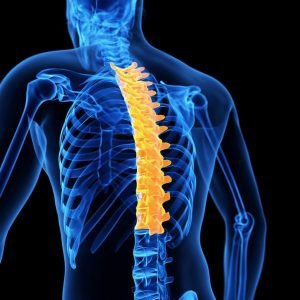Spondylolisthesis
What is Spondylolisthesis?
Many individuals in the world suffer from back pain. In fact, experts suggest that about 8% of all adults suffer from chronic back pain. Back pain can have many different causes. Physicians call the most common cause of low back pain in adolescent athletes that can be seen on X-ray, a stress fracture. Stress fractures can affect one or more of the bones (vertebrae) that make up the spinal column. Physicians use the technical term of spondylolisthesis to define this condition. spondylolisthesis most commonly affects the fifth lumbar vertebra in the lower back. spondylolisthesis may also affect the fourth lumbar vertebra. spondylolisthesis affecting the fourth lumbar vertebra remains much less common than spondylolisthesis affecting the fifth lumbar vertebra.
Stress fractures can greatly weaken the bone. If the stress fracture weakens the bone to an excessive amount, the bone can no longer maintain its proper position. When the bone cannot maintain the proper position, the vertebra can start to shift out of place. Physicians call this condition of damaged or weakened bone shifting out of place spondylolisthesis (spon-dee-low-lis-thee-sis). If too much slippage occurs, the bones may even begin to press on nerves. If bones start to slip and press on nerves, the treating orthopedic spinal specialist may need to resort to surgical intervention to correct the condition.
Genetic Causes of Spondylolisthesis
Many specialists suggest that a hereditary aspect to spondylolisthesis may exist. Due to genetic make up, an individual may have thin vertebral bone since birth. Having thin vertebral bones makes the individual vulnerable to this condition. Significant periods of rapid growth may encourage slippage.
Other causes of spondylolisthesis exist other than genetics. Many recreational acitivties can lead to spondylolisthesis.
Some sports including gymnastics, weight lifting, and football, put a great deal of stress on the bones in the lower back. These sports also require that the athlete constantly overstretch (hyperextend) the spine. Over time, these activities and actions can cause a stress fracture on one or both sides of the vertebra.
Many people have both spondylolisthesis and spondylolisthesis present, but without any obvious symptoms.
Pain usually spreads across the lower back and may feel like a muscle strain.
Spondylolisthesis can cause spasms that stiffen the back and tighten the hamstring muscles, resulting in changes to posture and gait. If patient experiences significant slippage, the vertebral bones may start to compress the nerves and narrow the spinal canal.
How do Orthopedic Spinal Surgeons treat Spondylolisthesis?
In the majority of cases of spondylolisthesis, the vertebral bones remain stable. When the bones of the vertebrae remain stable, physicians can treat the patient using conservative treatments. Conservative treatments used to treat spondylolysis include bed rest, non-steroidal anti-inflammatory medications, restriction of lower back activity, and possibly a brace. A orthopedic spinal physician should always monitor the treatment of spondylolysis to ensure that stability of vertebrae remains intact and the grade of spondylolsthesis stays appropriate for conservative care. If the spine lacks stability then the treating physician may need to consider surgical intervention.
To treat spondylolisthesis surgically, the physician performs the procedure with the goal of removing pressure on the spinal nerves. Surgeons often resort to performing either an anterior, posterior, or a transforaminal lumbar interbody fusion. Spinal surgeons have the same goals in all three of those procedures: To decompress the spinal nerves, restore alignment of the spine, and stabilize the spine.
Surgeons perform anterior, posterior, and transforaminal lumbar interbody fusions with the patient under general anesthesia. With a patient under general anesthesia, the patient remains asleep for the entirety of the procedure. The surgeon may perform the procedure outpatient or have the patient stay in the hospital for at least one night in order to monitor the patient.
The surgeon may perform the procedure outpatient or have the patient stay in the hospital for at least one night in order to monitor the patient.
Following the procedure, the treating spinal surgeon may recommend that the patient participates in physical therapy. Physical therapy can help the patient regain strength and learn proper movements and exercises to avoid further injury.
To view a list of all insurances that AOA Orthopedic Specialists accept, click HERE. To schedule an appointment online, click HERE.

